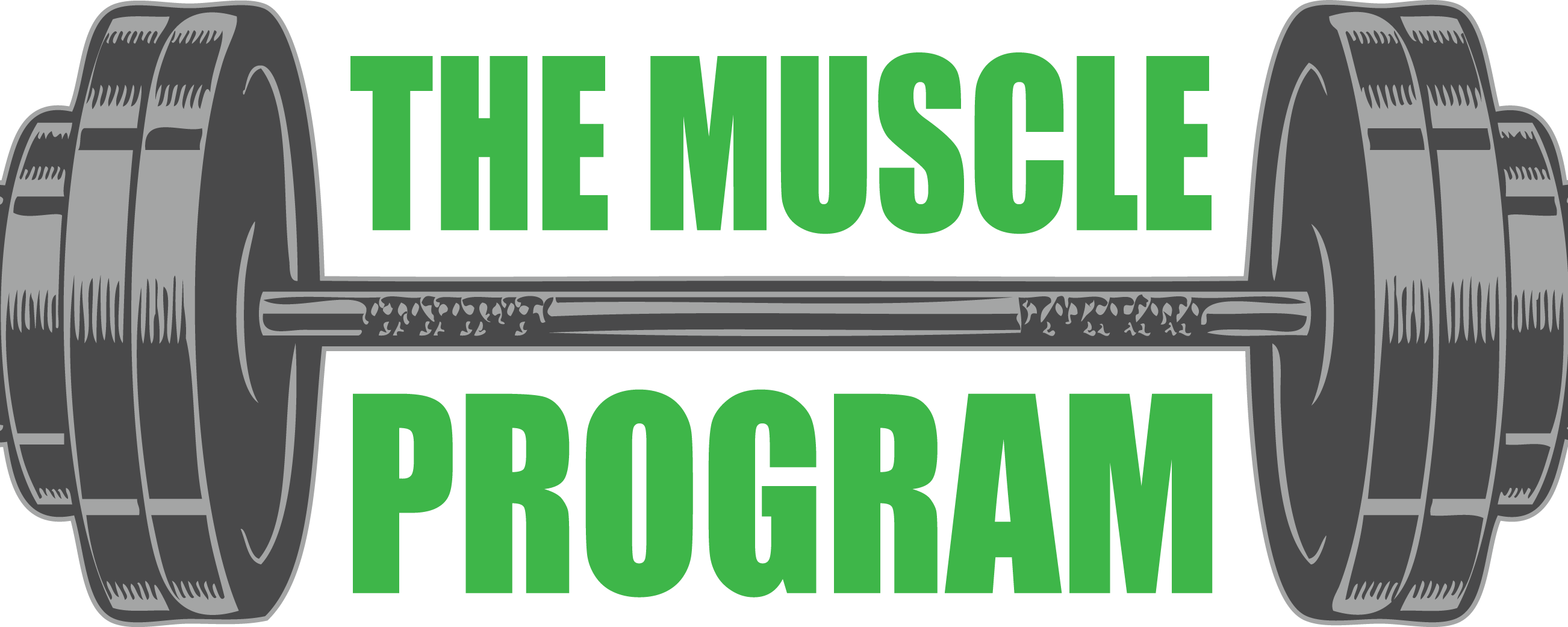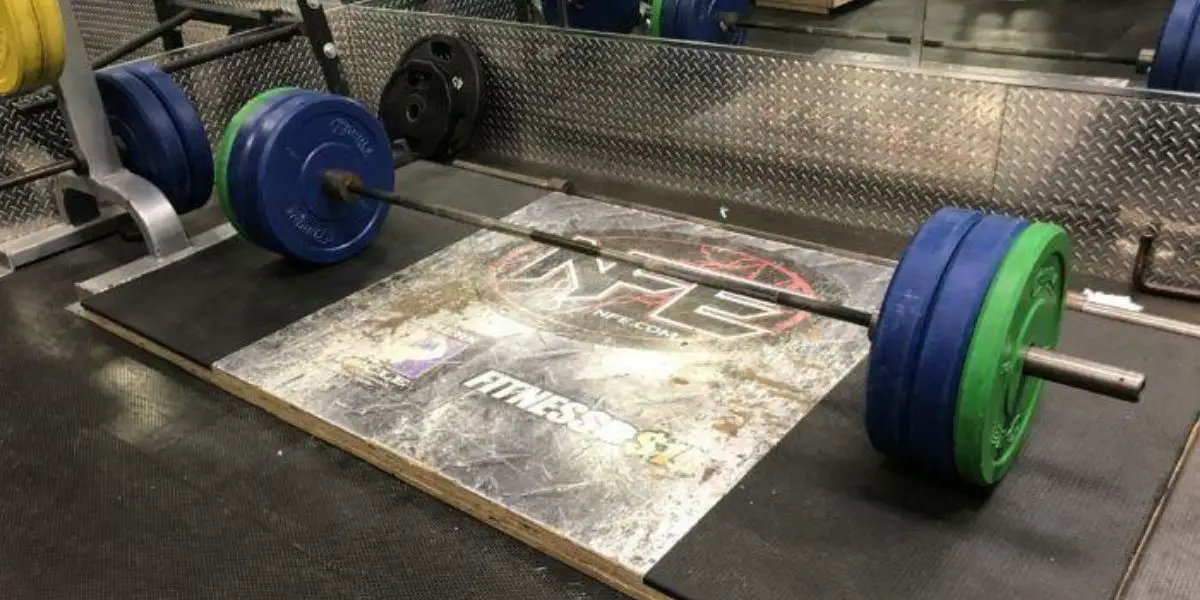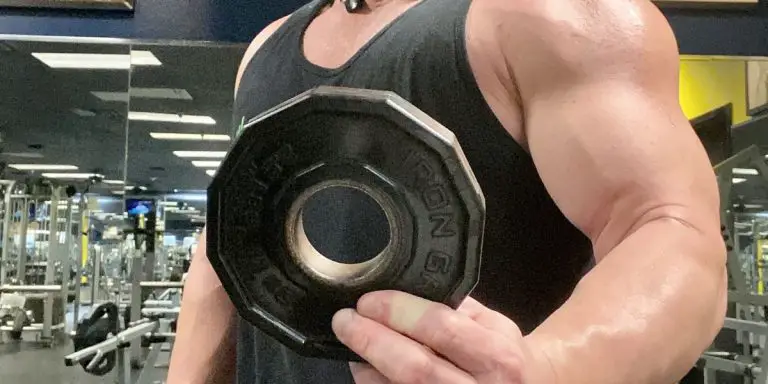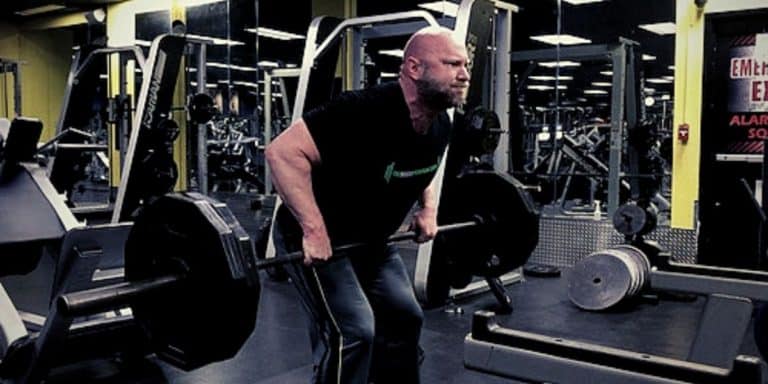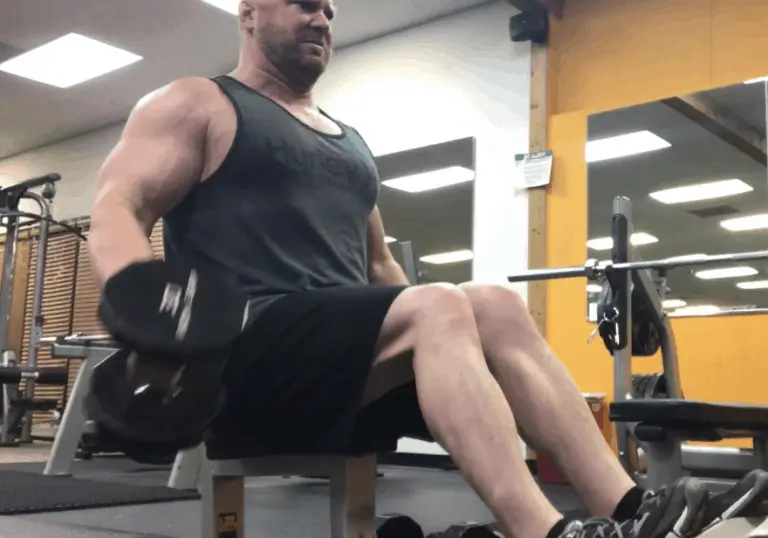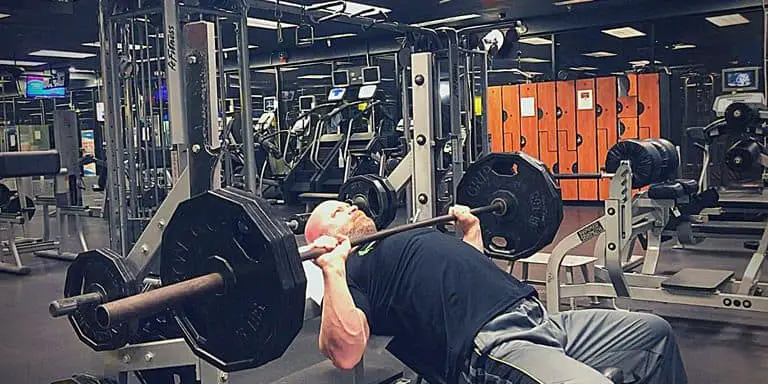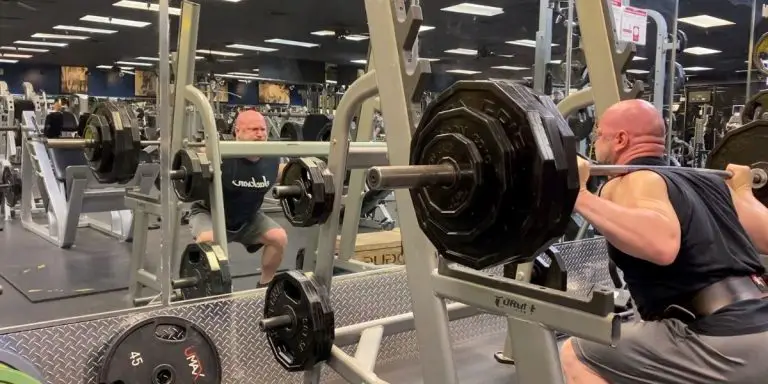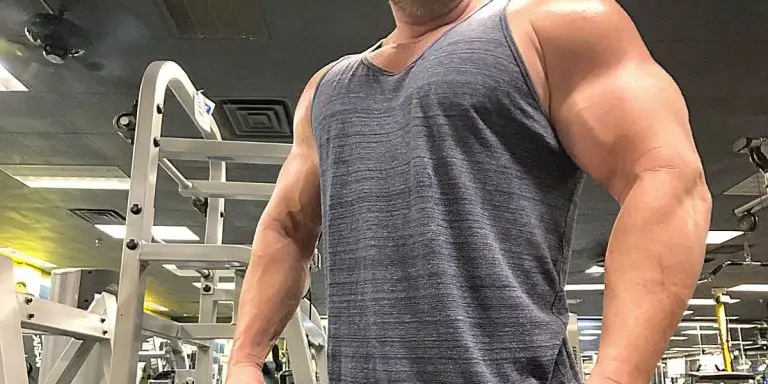Fundamentals of Weight Training: Beginner’s Guide to Building Muscle
Whether you aspire to be a bodybuilder, powerlifter, or just want to start lifting weights, you need to begin with the basics.
There are certain core exercises you need to learn how to perform. You also need to know the proper methods to maximize muscle growth and strength for each body part.
That’s why I created this post for you called the Fundamentals of Weight Training. You’ll learn everything you need to get started on your awesome journey to building muscle!
Here are the contents:
- Benefits of Weight Training
- Basic Exercises to Build Your Foundation of Muscle
- Beginner’s Basic Weight Training Workout
- How to Train Each Muscle Group
- Beginner’s Guide to Nutrition
- Weight Training Tips for Beginners
- My Personal Story (and Mistakes I Made) as a Beginner
Benefits of Weight Training
I could go on for days telling you why you should start lifting weights. I’ll just say it’s awesome in the fact that it will change every part of your life, forever.
It goes beyond just getting bigger and stronger. As you probably already know, there are loads of health benefits to weight training. But there are also psychological benefits you get from hitting the gym as well.
So yes, weight training helps you build big muscles and get stronger, but here are other reasons why you should lift weights:
- It becomes a lifestyle that will lead to healthier choices
- Strong muscles help support strong bones
- Increase longevity by decreasing body fat and improving cardiovascular health
- Having strong muscles can reduce your risk of injuries
- Can reduce the risk of diseases and ailments per health.usnews.com
- Builds confidence
- Can put you in a position to help the others (weightlifters often attract attention – use this to give back!)
These are just a few reasons you may have not thought other than just building muscle. But it’s pretty cool to see how weight training can impact practically every part of your life, for the better.
Now let’s dig into the ‘meat and potatoes’ of weight training fundamentals…
5 Basic Exercises to Build Your Foundation of Muscle
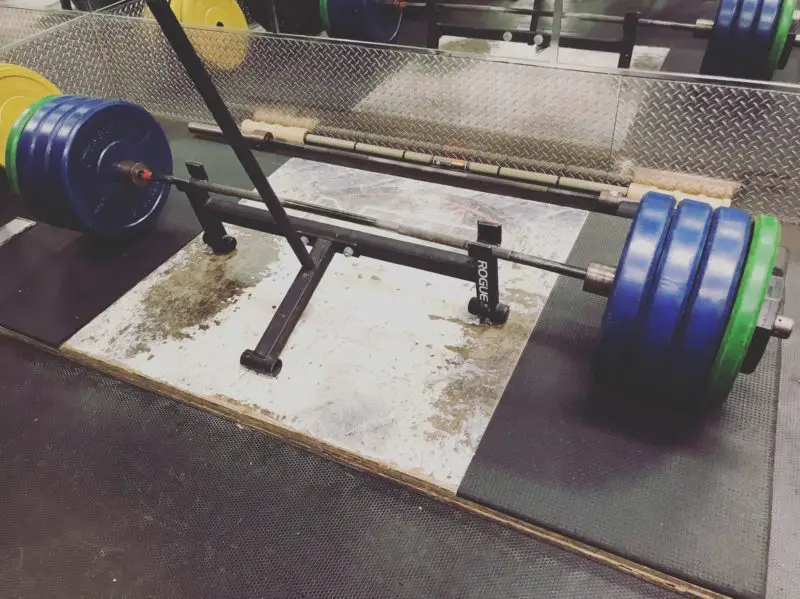
When you’re just starting out, you want to perform the exercises that build the most mass and strength.
Think of these exercises as building a house. You need a solid foundation for that house to stand firm before you start building out the details.
And that’s what these exercises will do for you. So get ready to build your house!
Here are the first 5 exercises you’ll want to focus on:
- Squats
- Deadlifts
- Bench Press
- Barbell Rows
- Overhead Press
Most every other exercise you’ll do in the gym will be based on one of the above movements.
And don’t worry, we’ll get to the fun exercises like curls later. But in the beginning, it’s important to focus on these 5. Remember, you’re building your foundation.
Now I’m going to teach you how to perform each exercise, with proper form.
Squats
Squats are often called ‘the king of exercises.’
Though it focuses on lower body strength and mass, it’s actually considered a full body exercise due to the effort that goes into squats.

How to squat:
- Position the bar on your lower traps behind your neck while gripping the bar about shoulder-width apart
- Firmly step back
- With a controlled motion, start squatting down towards the ground
- Force the pressure to be on your heels (not the balls of your feet as you don’t want to lean forward)
- Do not round your back
- Drop just a little below parallel
- Squeezing the bar tight (almost pulling it down into your traps and shoulders), power back up to standing position
Deadlifts
Deadlifts are right up there with squats in regards to being one of the best muscle and strength building exercises.
When deadlifting, you’re basically pulling raw weight off the floor. This will pack on slabs of muscle to your frame and help you get stronger.
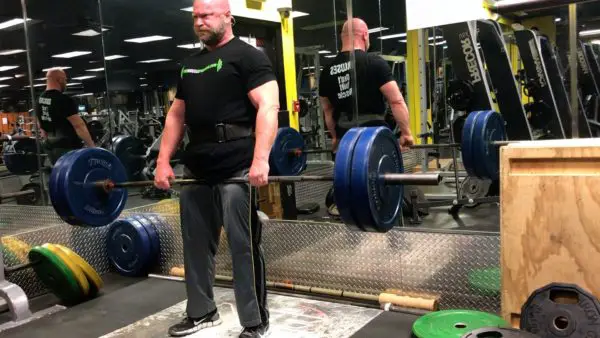
How to do deadlifts:
- With the bar on the ground, step towards the bar so that the bar is over the top of your feet
- Stance will vary but for traditional deadlifts, stand a little narrower than shoulder-width
- Grab the bar just outside of your ankles (hands can be touching your legs)
- Pull the bar up keeping the bar against your body throughout the lift
- Do not round your back (keep a slight arch)
- Once you’re in standing position, do not hyperextend your back (I see many do this)
- Lower the bar back down the same path
Bench Press
Bench press is a favorite exercise of many bodybuilders. It’s also what a common measure of strength (though true strength should be based on how much you can squat and deadlift).
Bench press will help you build a massive chest and upper body. You’ll get a lot of shoulder and triceps work doing bench press too.
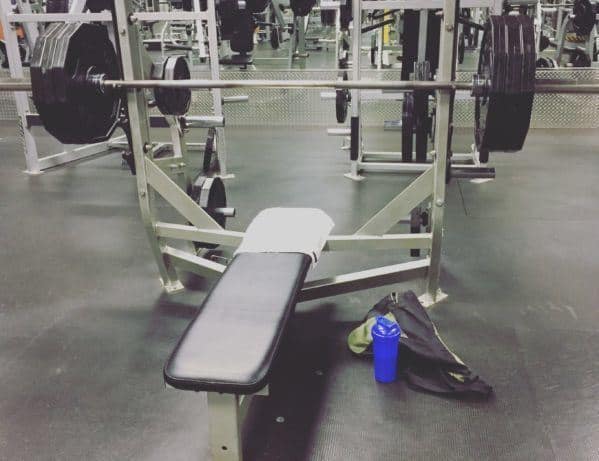
How to bench press:
- Lying on the bench with a slight arch in your lower back and feet planted firmly on the group, grab the bar about shoulder-width apart
- Also, clinch your shoulders blades together before lifting the bar
- Lift the bar off the rack and with a controlled motion, bring the bar down towards your middle chest
- There’s a natural curvature with this exercise going and curving back in before the bar touches your chest
- Once the bar touches your chest, use your power to push the weight back up to the starting point
Barbell Rows
Barbell rows are the antagonist exercise to bench press. You’re pulling instead of pushing.
Doing barbell rows will help you build and develop your back, and often neglected muscle.
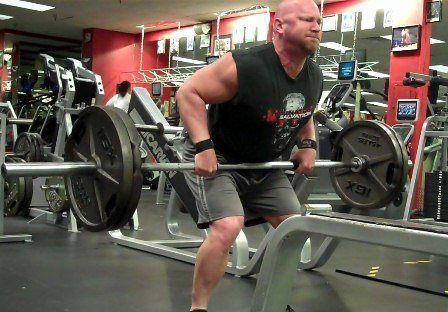
How to do barbell rows:
- Grab the bar off the rack about shoulder-width apart
- As you start to bend forward, arch your back and stick your butt out
- Also, dig your heels into the ground; this will provide balance and support in the right places
- Pull the bar up into your stomach
- Lower the bar back down in a controlled manner
Overhead Press
Overhead press is primarily a shoulder exercise but also builds overall upper body strength.
This is the opposing exercise to deadlifts. You’re pushing raw weight directly over the head (whereas with deadlifts, you’re pulling raw weight from the ground).
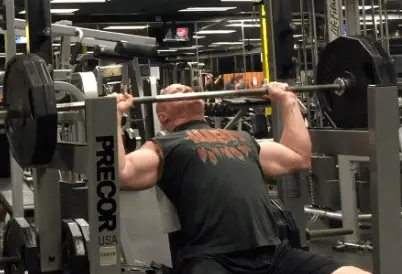
How to do overhead press:
- Assuming you’re standing, start with the bar at chest level, grab the bar about shoulder-width apart
- Press the weight up
- Once you get beyond your face, slightly move your head to where you’re looking forward to ensure the press is directly over your head
- Lower the back in a controlled manner back to the starting position
*You can also do this seated but make sure you’re doing a true overhead press (many will lean back and this becomes a modified incline press)
Beginner’s Basic Weight Training Workout
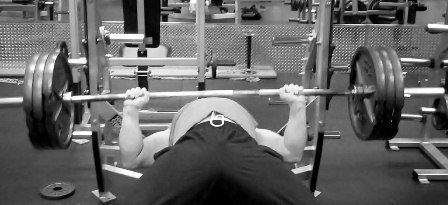
Now let’s take those 5 basic mass and strength building exercises you just read about and create a simple workout plan.
Before you start, it’s important to understand what sets and reps are.
- Reps: A rep (repetition) is one completed movement of an exercise, from start to finish, back to start
- Sets: A set is a collection of reps
In the workouts, you’ll sets and reps listed like ‘3 x 10.’ This means three sets of 10 reps.
- Set 1: 10 reps
- Set 2: 10 reps
- Set 3: 10 reps
Or, you may see something like ‘3 x 8, 6, 4.’ That translates to:
- Set 1: 8 reps
- Set 2: 6 reps
- Set 3: 4 reps
Whenever you see lower reps that typically means you should be going up in weight, lifting heavier.
Let’s use bench press as an example. Your sets with weight may look something like this:
- Set 1: 8 reps with 135 lbs
- Set 2: 6 reps with 155 lbs
- Set 3: 4 reps with 170 lbs
I have an interesting article for you to read later on rep ranges, and what truly works best for building more muscle (the answer may surprise you!): High Reps vs Low Reps: Best Rep Range for Muscle Size
Training Split
A training split is what you use to define your workout days.
Below are 4 workouts you’ll do within a week. I suggest taking a day off after every 2 workouts. And you can take up to 2 days of rest if you choose.
Here’s an example:
- Monday: Workout 1
- Tuesday: Workout 2
- Wednesday: Rest
- Thursday: Workout 3
- Friday: Workout 4
- Saturday: Rest
- Sunday: Rest
You’ll also notice that you’re doing lower reps for workouts 1 and 2. Workouts 3 and 4 are the same exercises, but with higher reps. This will help build strength and muscle mass and will get you used to working all of your muscle fibers.
Also, make sure you do 1-2 warm-up sets (not listed below) with lightweight before going into your working sets.
*You’ll notice below that you’re training everything twice a week. You can read more about the benefits of 1x vs 2x a week in my post: Training Frequency: Once vs Twice a Week for Muscle Mass
Workout Notes
Let’s go over a few important workout notes:
- Rest two minutes between sets
- For workouts 1 and 2, go up in weight about 10% each set (for that exercise)
- For workouts 3 and 4, use the same weight for each set (for that exercise)
- Stretch the muscles you trained after every workout for at least a total of five minutes
- Do this workout for at least 6 weeks before incorporating other exercises (which I’ll go over more exercise later)
- Focus on mastering your form on the exercises!
Workout 1
| Exercise | Sets x Reps |
|---|---|
| Squats | 3 x 8, 6, 4, |
| Deadlifts | 3 x 8, 6, 4 |
Workout 2
| Exercise | Sets x Reps |
|---|---|
| Barbell Rows | 3 x 8, 6, 4 |
| Bench Press | 3 x 8, 6, 4 |
| Overhead Press | 3 x 8, 6, 4 |
Workout 3
| Exercise | Sets x Reps |
|---|---|
| Squats | 3 x 12 |
| Deadlifts | 3 x 12 |
Workout 4
| Exercise | Sets x Reps |
|---|---|
| Barbell Rows | 3 x 12 |
| Bench Press | 3 x 12 |
| Overhead Press | 3 x 12 |
After doing this program for six weeks, and when you feel you’re ready to move up to the next level of muscle building and strength training workouts, then I have something for you…
- If your primary goal is to get stronger, you can move up to my basic 5 x 5 workout this post: 5 x 5 for Muscle and Strength Gains
- If you want to go more of the bodybuilding route, then check out my post: Bodybuilding for Beginners (or continue reading below as we’re going to get into some more exercises for building muscle)
How to Train Each Muscle Group
Now let’s learn about the fundamentals of building size and strength for each muscle. We’ll also talk about some other exercises for each body part.
This is moving more towards bodybuilding where the goal is to build and shape your muscles. However, you still need to continue to perform the basic exercises we just went over in the workouts above. You need to continue to build your foundation.
There are 3 key points we’ll cover for each muscle:
- How each muscle works
- Tips to build each muscle
- Exercises that target each muscle
Chest Training Fundamentals
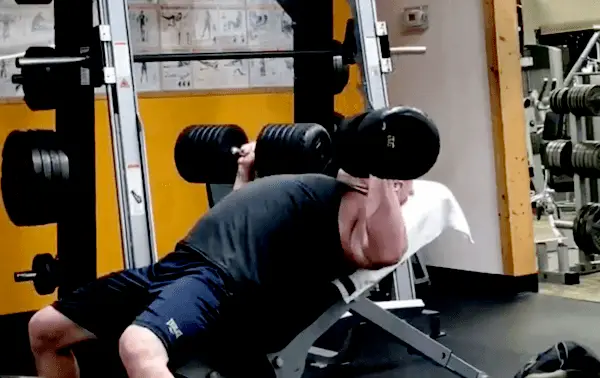
Your chest muscles are activated by pushing movements. And the core compound exercise to puts the most stress on the chest is bench press, as we covered earlier.
To further build your chest, you need to focus on the negative part of each rep. Instead of just letting the weight fall towards your chest, take 3-5 seconds to make that descent. This will make you stronger and build more upper body size.
Chest Exercises:
- Bench Press
- Incline (and decline) Bench Press
- Dumbbell Press (incline, flat, and decline)
- Dumbbell Flyes (incline, flat, and decline)
- Cable Crossovers/Flyes (upper and lowers)
- Pec Dec Flyes
- Dumbbell Pullovers
Back Training Fundamentals
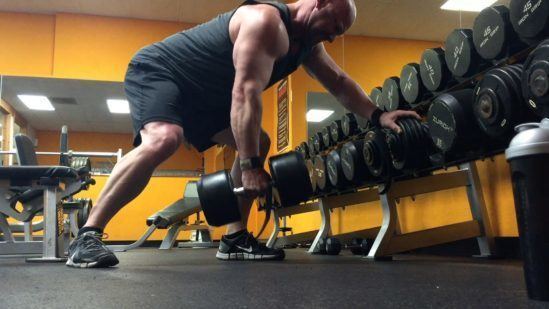
Back is built with pulling exercises. Anytime you pull towards your torso, whether from straight out in front of you, from above, or from below, you’re using your back muscles. This is the opposite of both chest and shoulder, which are built with pushing movements.
Your back is your largest upper body muscle. As you get further into weight training, you’ll want to do more volume (more exercises, sets, and overall reps).
I would even say train it the hardest (I’m not saying slack on your other muscles!).
But many young lifters neglect to work their back as hard as, let’s say chest. Don’t make that mistake!
In fact, I personally like to train bac twice a week, which you can read more about in this post: Training Back Twice a Week for Ripped Mass
Back Exercises:
- Barbell Rows
- Deadlifts
- Reverse Grip Barbell Rows
- Dumbbell Rows
- T-Bar Rows
- Seated Rows (close and wide grip)
- Lat Pulldowns (close, wide, and reverse grip)
- Cable Pullovers
- Pull-ups
Leg Training Fundamentals
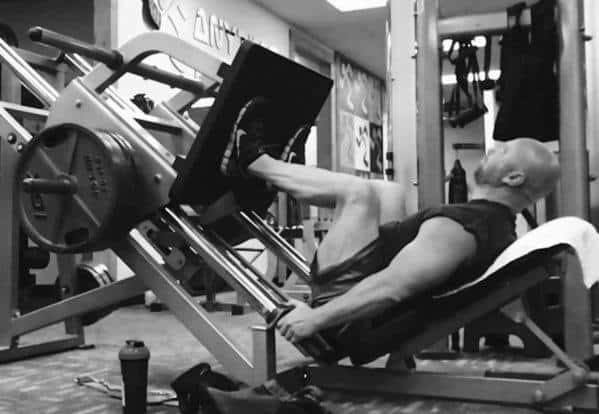
The most brutal day of the week is leg day. Or at least it should be. At a super high level, your legs are split up into quads, glutes, hamstrings, and calves (there are several muscles within those muscles).
You can activate your leg muscles with a variety of exercises. More importantly, your legs require more volume than any other muscle group if you really want them to grow.
This is because your legs, especially quads, have more slow-twitch muscle fibers, and those fibers respond better to more volume and higher reps.
*In many of my personal legs workouts I do heavy squats in the beginning, but the rest of the leg workout is high reps.
Extremely important: DO NOT NEGLECT YOUR LEGS! Learn more about why I recommend training legs twice a week in this post: Training Legs Twice a Week: How to Build Bigger Legs
Leg Exercises:
- Squats
- Deadlifts
- Leg Press
- Front Squats
- Romanian and Stiff-leg Deadlifts
- Leg Extensions
- Leg Curls (lying, standing, seated)
- Hack Squats
- Lunges (barbell, dumbbell)
- Calve Raises (standing, seated)
**I want to point out that leg training should be treated a little different than upper body training. For starters, your legs can handle a lot more volume (sets and reps) than your upper body. So don’t be afraid to push your legs harder.
Also, quads tend to respond better to higher reps in regards to muscle growth. This doesn’t necessarily mean that you should go light. But you may want to try higher press, such as 12-15 reps, for exercises like leg press and leg extensions.
Shoulder Training Fundamentals
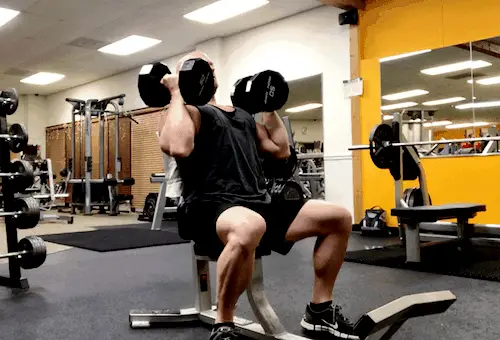
Anytime you pushing over your head you’re working shoulders. This is a similar concept to chest training.
The key here is to make sure you’re pressing the weight directly over your head so that you’re activating your shoulder muscles, not your shoulder joints.
You can also activate your shoulders with lateral movements. This can be done with dumbbells or cables.
There’s another part of your shoulders and back called your traps. Bodybuilders will often do exercises, such as shrugs, to target these muscles directly.
This is a pulling movement (sometimes traps are trained with back instead of shoulders).
Shoulder Exercises:
- Overhead Press
- Seated Overhead Press
- Seated Dumbbell Press
- Lateral Raises
- Bent-Over Raises
- Front Raises
- Shoulder Shrugs (dumbbell and barbell)
- Reverse Pec Dec
Arm Training Fundamentals
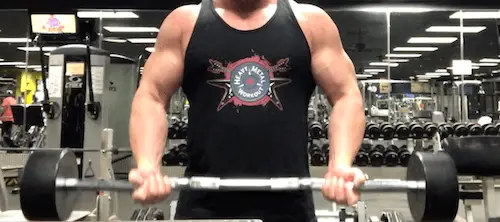
Ready to get ‘armed?’ Your arms are made up of mostly your triceps.
Unfortunately most pay more attention to their biceps (this often happens with chest and back – people, especially guys, tend to train their chest and biceps harder because those are more visible in the mirror).
This is a mistake I see many beginners make. That’s probably because your biceps are more visible to you in the mirror than your entire triceps muscle, which wraps around 2/3’s of your arm.
Let’s dig into training arms…
Triceps are also worked with pushing (chest and shoulders) exercises, and your biceps are worked with pulling (back) exercises. In theory, you can still build big arms without training arms directly.
**You also have your forearm muscles but those get plenty of stimulation from any upper body exercise.
The important thing to remember when you’re training biceps and triceps directly is to force those muscle to do the work. Going too heavy and using poor form is not going to build huge arms. Strict form will.
Triceps Exercises:
- Close Grip Bench Press
- Dips
- Skull Crushers
- Rope Pressdowns
- Cable Pressdowns (straight and cambered bar)
- Single Cable (and Rope) Pressdowns
- Overhead Dumbbell Extensions
- Dumbbell Kick-backs
Biceps Exercises:
- Barbell Curls (and cambered or ‘EZ’ bar)
- Dumbbell Curls (straight, alternate, and hammer)
- Preacher Curls
- Incline Dumbbell Curls
- Cable Curls
For a full workout program using these exercises, check out my complete bodybuilding for beginners guide here: Bodybuilding for Beginners: Complete Guide
Beginners Guide to Nutrition
I don’t need to tell you this, but nutrition is going to be half the battle. And there are 2 major things to remember when you’re just getting started with weight training:
- You need food to recover from your workouts and grow
- Keep it simple
Many overcomplicate this part. So I’m going to give you the most simple nutrition concepts:
- Quality protein for muscle growth
- Complex carbs for energy
- Healthy fats for overall health
- Processed foods
- Foods high in sugar and refined sugar
- Overeating (you’ll get fat!)
- Undereating (you won’t make gains)
Obviously how much you eat is going to depend on you in regards to if you’re a hardgainer or if you tend to gain fat easily (when I started lifting, I was a hardgainer and should have been eating more calories).
That’s something you’ll need to experiment with; there’s no one-size-fits-all plan. But if you stick with those basics concepts I gave you, you should be able to easily figure out the rest.
The worst thing you can do is fall into the trap of getting on whatever fad or trendy diet is out there. Like the weight training concepts we went over earlier, stick to the basics of nutrition. That’s what it takes to pack on size and get strong.
**As far as supplements, I don’t recommend taking anything right away if you’re just getting started.
Focus on lifting and eating first. Later, you can start adding some simple supplements like creatine and maybe a pre-workout.
When you get ready for that, you can read about my recommended mass building supplements.
Weight Training Tips for Beginners
Now you’re all set to get started with weight training. I hope you’re excited and ready to hit the gym!
Here are some simple tips that can help you stay on track with your workouts:
- Choose (or create) a workout program schedule you know you’ll stick with (I have MANY workout programs on my site here).
- Best consistent! Don’t skip workouts.
- Use proper form and do the exercises correctly. No shortcuts.
- Always be a student and continue educating yourself by reading more about working out and nutrition (there’s plenty of info on this site but use other reliable sources as well).
- Make sure your nutrition is intact. You can learn more about the types of foods you need from my post: Jason’s Simple Bodybuilding Meal Plan
- Set short-term goals and track your progress, especially in the beginning.
- Enjoy your workouts and seeing the changes in your body!
Also, never stray from the basics. Even the top pro bodybuilders and powerlifters rely on basic weight training fundamentals to continue building muscle and strength.
Sure, you’ll eventually start incorporating different exercises. But those are often there to help you shape your muscles. Right now, you need to focus on building a solid foundation of muscle and strength.
My Personal Story (and Mistakes I Made) as a Beginner
We all have to start somewhere, and I’d like to encourage you by sharing my own story of how I got started lifting weights. But I’m also going to share some mistakes I made!
I grew up as a skinny kid that got picked on a lot. If you’ve experienced this or anything similar, you know how it kills your confidence.
So I decided that I would start lifting weights as a means to an end. I saw other kids who were bigger and stronger – no one messed with them.
I was about 14 when I started training. My dad bought me a weight set (this was back in the late 80s and we had those plastic cement-filled weights). I mainly worked out in the backyard. My school had a gym, but I was too scared to go! I thought that I would only be setting myself up for ridicule.
Even though I made some progress in my physique and strength gains, I didn’t start packing on real size until my mid-20s. It was kind of frustrating, but looking back, I now know why I didn’t make as good of gains as I could have.
Here’s what I did wrong…
- I did not start out the 5 big exercises I talked about at the beginning of this post
- I was too focused on trying to look big rather than getting strong
- I didn’t educate myself on the importance of nutrition (I didn’t eat enough quality food to make superior gains)
- I was always too worried about what others thought of me and I let comments get to me
I wanted to share that with you because I don’t want you to make the same mistakes! You can make faster gains in the gym. But you must focus on the basics, and master the basics. Because that’s going to be the foundation that you’re able to build on later.
**If you want to learn more about how I got started, you can pick up my book on Amazon: Heavy Metal and Weights
I hope this helped you learn this post Fundamentals of Weight Training helps you. Save this post and continue to use it as a guide.
I’m certain this is now something you’ll do for the rest of your life, and your life will be better because of it. Now, go get ready for the gym because it’s time to build some muscle!
Train with Passion,
Jason
